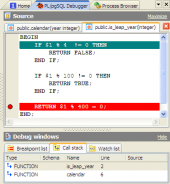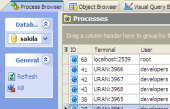PostgreSQL Maestro online Help
| Prev | Return to chapter overview | Next |
Create User Wizard
Create User Wizard guides you through the process of creating a new user. See How To Create User to learn how to run this wizard.
The basic principles of Create Object Wizards in PostgreSQL Maestro are explained in a separate topic. Below you will find a description of wizard steps that are unique for the current object.
Use System ID to specify the PostgreSQL user ID of the new user. This is normally not necessary, but may be useful if you need to recreate the owner of an orphaned object. If this is not specified, the highest assigned user ID plus one (with a minimum of 100) will be used as default.
Password
Sets the user's password. If you do not plan to use password authentication you can omit this option, but then the user will not be able to connect if you decide to switch to password authentication. The password can be set or modified later within the user editor.
Password Encrypted
This Checkbox allows you to control whether the password is stored encrypted in the system catalogs. (If neither is specified, the default behavior is determined by the configuration parameter password_encryption.) If the presented password string is already in MD5-encrypted format, then it is stored encrypted as-is, regardless of whether checked or unchecked is specified (since the system cannot decrypt the specified encrypted password string). This allows reloading of encrypted passwords during dump/restore.
Note that older clients may lack support for the MD5 authentication mechanism that is needed to work with passwords that are stored encrypted.
Can create databases
These clauses define a user's ability to create databases. If it is specified, the user being defined will be allowed to create his own databases. Set false to deny a user the ability to create databases.
Can Create Users
These clauses determine whether a user will be permitted to create new users himself. Check to make the user a superuser who can override all access restrictions.
Valid until
Set an absolute time after which the user's password is no longer valid. If this clause is omitted the password will be valid for all time.
Groups
The name of an existing group into which the user is to be included as a new member. Multiple group names may be listed.
User variables
This step suggests you to specify the user variable that govern the expected behavior of the database system during the user session.
| Prev | Return to chapter overview | Next |





 Download
Download Buy
Buy
